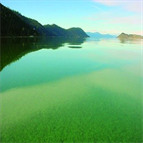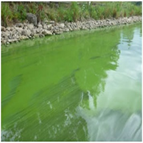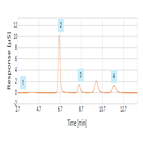Find methods for your needs
Refine by Feature
Displaying 1-3 of 3 results for Tag: Algae
Analysis of Microcystins from Blue-green Algae Using the TSQ Quantum Ultra LC-MS/MS System
Instrument Type: LCMSMSOvergrowth of algae is a common problem in many wetlands with advanced stages of eutrophication (the enrichment of chemical nutrients containing nitrogen or phosphorus in an ecosystem). This often results in a thick, colored layer on the water's surface, known as an algal bloom. Some of the algae that grow in these bodies of water, known as Cyanobacteria or blue-green algae, produce toxic compounds known as microcystins. We describe a method for rapid analysis of three microcystins detected in the wetlands of Japan (Microcystin-LR, YR and RR).
Fast and Accurate Determination of Algal Toxins in Water Using Online Preconcentration and UHPLC-Orbitrap Mass Spectrometry
Instrument Type: LCMSMSWhen the density of the colonies of Microcystis and Nodularia cyanobacteria surpass a certain level, they produce hepatotoxic substances called microcystins and nodularins, respectively,2 while Anabaena and Apha-zinomenon are known to produce a neurotoxin called anatoxin. We describe a column-switching technique based on online preconcentration and high-resolution, full-scan Thermo Scientific™ Orbitrap™ mass spectrometry to obtain fast and accurate results for the determination of algal toxins in drinking water.
Determination of Chloride in Algal Oil Using Combustion Ion Chromatography
Instrument Type: ICOil extracted from fish and algae is a renewable alternative to petroleum-based sources. If this oil is used as a lubricant, chloride needs to be monitored and its level minimized to reduce the likelihood that corrosive HCl will form. By using a combustion ion chromatography (CIC) system consisting of the automatic quick furnace AQF-2100H and an ICS-2100 ion chromatograph, the concentration of chloride can be determined accurately and quickly.



